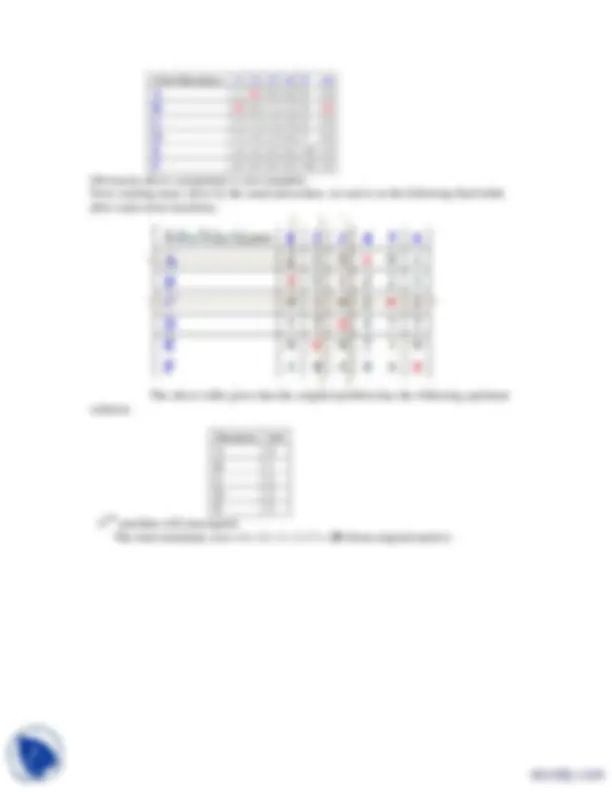



Study with the several resources on Docsity

Earn points by helping other students or get them with a premium plan


Prepare for your exams
Study with the several resources on Docsity

Earn points to download
Earn points by helping other students or get them with a premium plan
Community
Ask the community for help and clear up your study doubts
Discover the best universities in your country according to Docsity users
Free resources
Download our free guides on studying techniques, anxiety management strategies, and thesis advice from Docsity tutors
This is solution to assignment of Basic Mathematics course. This was submitted to Karunashankar Sidhu at Institute of Mathematical Sciences. It includes: Optimal, Solution, Transportation, Objective, Cost, Variance, Standard, Deviation
Typology: Exercises
1 / 3

This page cannot be seen from the preview
Don't miss anything!


to each cost in (i) one row say r th row (ii) one column say k th column? By how much is the optimal value of the objective function changed?
Solution: Consider the standard form of the objective function;
1 1
m n ij ij i j
z c x
1( ) 1 1
1( ) 1 1 1
1 1
m n n new ij ij rj rj i i r j j m n n n ij ij rj rj rj i i r j j j m n ij ij r i j new old r
z c x c x
c x c x x
c x a
z z a
the feasible solution will also minimizes the z new.
the optimal solution ‘ll remain unaltered, while the total transportation cost will be
A company has three plants A,B and C, and three ware houses X, Y and Z. The number of units available at the plants is 60, 70 and 80 and the demand at X, Y and Z are 50, and 80 respectively. The unit cost of the transportation is given as follow:
Find the allocation so that the total transportation cost is minimum. Solution: We solve this by Least Cost method.
Solve the following problem whose objective is to minimize the total cost, when a manufacturing company has to face assigning 6 different machines to 5 different jobs.
Jobs/Machines 1 2 3 4 5 A 2.5 5 1 6 1 B 2 5 1.5 7 3 C^3 6.5^2 8 D 3.5 7 2 9 4. E 4 7 3 9 6 F^6 9 5 10 Solution: Here the jobs are not equal in number. So it is an unbalanced assignment problem. Therefore a dummy job is to be introduced. Further the matrix involves elements in decimal. We can make them complete numbers by multiplying the whole cost matrix by
Subtracting the row minimums and column minimums, we obtain the new cost matrix as follows;